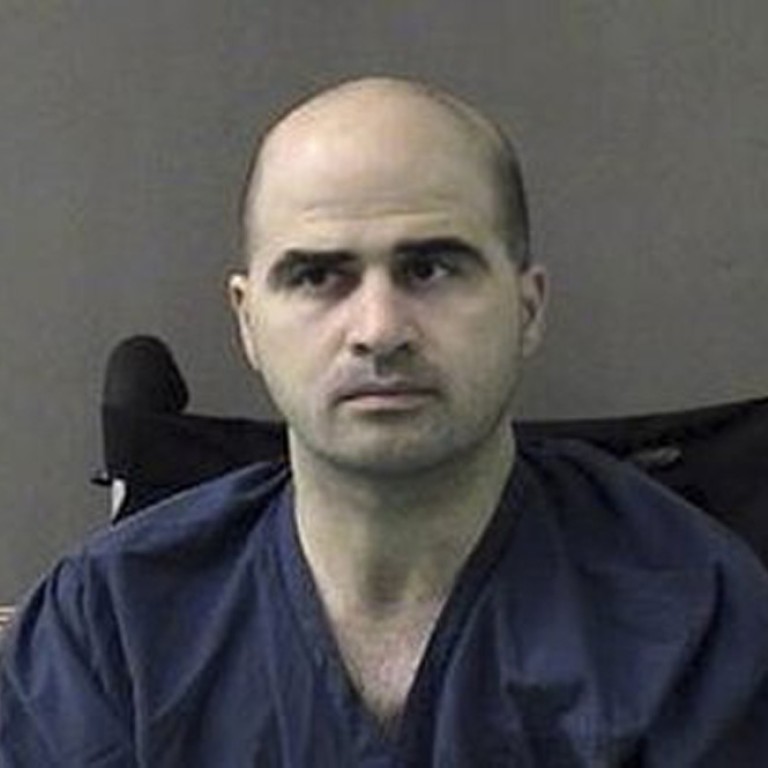
‘Hell broke loose,’ witness says of Fort Hood massacre
US Army soldiers testifying in the court-martial of Major Nidal Hasan for the 2009 shooting spree that killed 13 and wounded more than 30 at Fort Hood, Texas, on Monday described carnage and confusion usually reserved for live combat.
Hasan, 42, has admitted to shooting his fellow soldiers, saying he switched sides in what he called a US war on Islam, and he could face the death penalty if convicted.
“I could hear people screaming, brass hitting the ground. I could smell the smoke,” testified retired Lieutenant-Colonel Randy Royer, a major at the time who was shot in the leg and arm.
“I could see all the blood, the crumpled uniforms ... shell casings. It was just carnage,” added Royer, who used a cane to steady himself in court.
More than Sixty witnesses have taken the stand to describe the attack inside a medical facility at Fort Hood on Nov. 5, 2009, days before Hasan, an Army psychiatrist and US-born Muslim, was due to be deployed to Afghanistan.
“Hell broke loose,” said Staff Sergeant Christopher Burgess, who described gunfire following him every time he and a group of people moved, trying to escape the building.
Many of the witness have said they at first believed the shooting was a training exercise because soldiers are normally prohibited from carrying weapons on base.
Several quoted Hasan screaming “Allahu akbar” (“God is greatest” in Arabic) as he sprayed gunfire with his laser-sighted handgun. Fort Hood police eventually shot Hasan, who was paralysed from the waist down and attends court in a wheelchair.
Shemeka Hairston, a nurse, said she heard what sounded like firecrackers and saw a cloud of smoke. She called the 911 emergency line, and an operator advised her to “stay low.”
“It sounded like the gunfire was getting closer,” said Hairston, who wept on the stand and wiped tears away with a tissue and could be heard wailing upon leaving the courtroom.
As audio of Hairston’s 911 call played, Hasan stared ahead at the screen displaying the transcript of the call, showing no emotion on his face. Hasan, who acts as his own lawyer, refrained from cross-examining any witnesses.
Prosecutors opted against bringing terrorism charges against Hasan. A review by a former FBI director found Hasan had exchanged emails with Anwar al-Awlaki, a US-born cleric linked to al Qaeda’s Yemen-based wing. Awlaki was killed in a US drone strike in 2011.
The Military judge, Colonel Tara Osborn, granted the 13-member panel, comprising nine colonels, three lieutenant colonels and a major, more time between witnesses to jot notes.
The panel, which must unanimously find Hasan guilty of premeditated murder for him to be sentenced to death, never questioned the witnesses. The US military has not executed a service member since 1961.
The court-martial is expected to turn on Tuesday to expert witnesses, some of whom will testify on autopsy reports, medical treatment and bullet trajectories, among other elements of the shooting.
One by one, witnesses on Monday relived the chilling events of the early afternoon rampage at the Soldier Readiness Processing Center at Fort Hood, the largest Army installation in the United States.
“My arteries were blowing blood all over the place,” said Mick Engnehl, a former private first class, who was unable to raise his right arm to be sworn in, the result of being shot twice in the neck and shoulder.
Another witness, Christopher Royal, a Chief Warrant Officer at the time, said he fled the building and took cover behind an SUV, although Hasan at one point continued to come down toward him spraying bullets.
Royal, whose pregnant wife sat only a few feet from Hasan in the small, wood-panelled courtroom, her eyes locked on her husband, said he wanted to disrupt the shooter by charging him but slipped in blood. He also saw Hasan release an empty magazine and reach down into his cargo pocket and reload.
“He was prepared,” Royal added.
